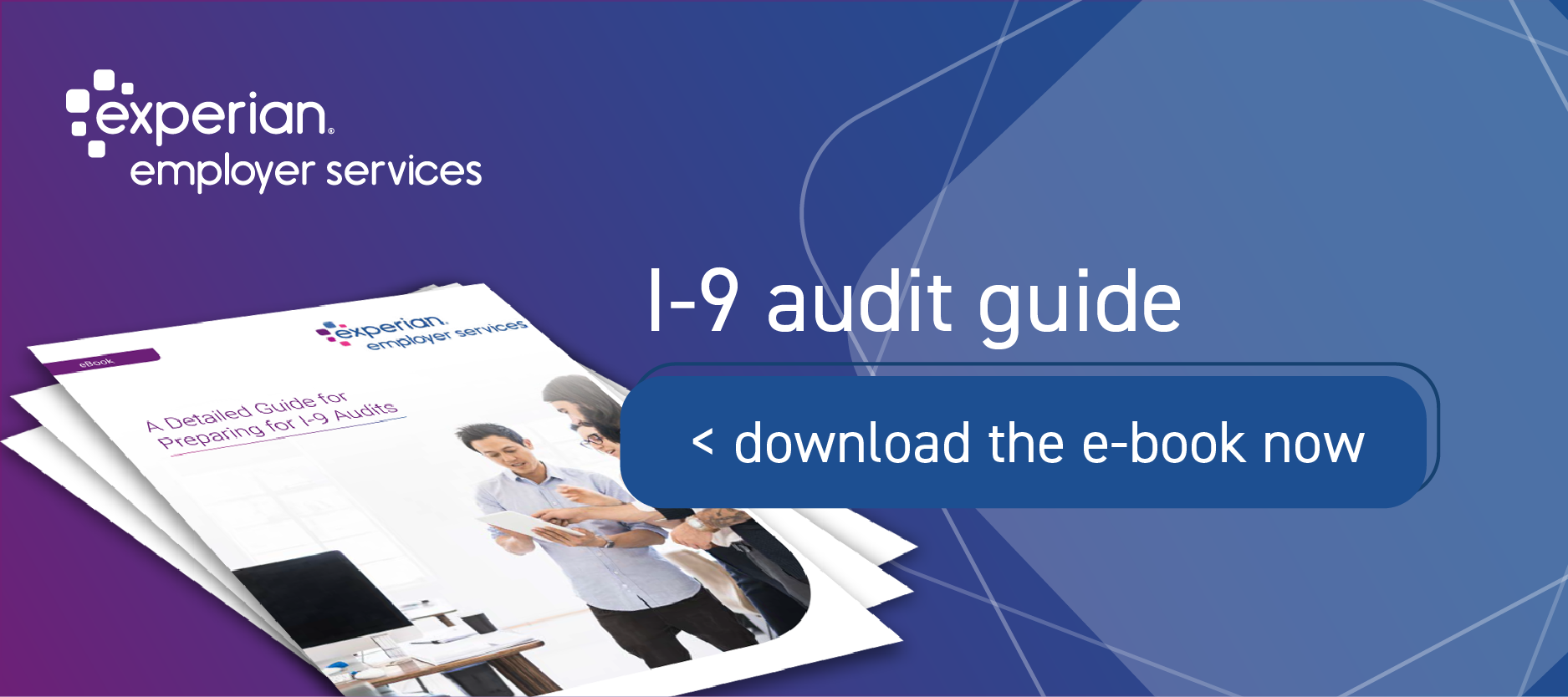
In early May, the U.S. Department of Homeland Security (DHS) and U.S. Immigration and Customs Enforcement (ICE) announced that employers will have 30 days to comply with standard Form I-9 requirements after the COVID-19 flexibilities sunset July 31, 2023. A temporary policy has been in place since March 2020 allowing employers to review employees’ identity and employment authorization documents without employees’ physical presence. Sunsetting this temporary policy effectively ends I-9 remote verification for the time being. This summary will cover how the announcement affects employers who were utilizing the I-9 remote verification process.
COVID-19 Flexibilities for I-9 Remote Verification
DHS and ICE originally offered employers the option to defer the requirement for physical I-9 verification due to COVID-19 and restrictions on in-person gatherings. The expectation was that physical inspection would occur after normal operations resumed for an employer. In March 2021, ICE extended this flexibility due to continued precautions related to COVID-19, and again in April 2022, with a final extension in October 2022.
The recent May 4, 2023 announcement sets a deadline of August 30, 2023 to perform all required physical examination of identity and employment eligibility documents. The timing of the announcement comes the same month that the COVID-19 Public Health Emergency ends. Physical examination must be completed for all individuals hired on or after March 20, 2020, who have only received a virtual or remote examination under the COVID-19 flexibilities. This includes employees working remotely.
Methods of remote examination could have included video, fax or email, with “COVID-19” entered as the reason for a delay of physical examination.
What This Means for Employers
All employers will be affected by this announcement if identity and employment eligibility documents were verified remotely. To help employers understand next steps, here are answers to a several frequently asked employer questions:
Q) We have notated as directed our virtually inspected I-9s that used a remote process. How do we reverify these I-9s?
A) The simple answer is that the employer or employer agent needs to review the documents in person, and then add COVID-19, Documents Physically Examined, Date of examination, Initials of person reviewing. If the person who initially performed the virtual inspection is not available for the in-person inspection, the completer should also add their full name and title in addition to the above information.
Q) What do we do with documents that have expired over the course of this program?
A) Documents that have expired since the time they were presented virtually may still be presented. However, the employer completer will want to ensure that the expired documents do not require reverification in the classic sense. For instance, if a U.S. Citizen provided U.S. Passport that has expired since presented as part of this process, they may still present that document.
If an Alien Authorized to Work presented a Foreign Passport with an I-94 which has since expired, they will need to be reverified using the Section 3 process.
Q) What if my employee no longer has the document that was initially presented is no longer in their possession for some reason?
A) Employee who initially presented a US Passport, (list A), now presents a driver’s license and SSN Card, (List B and C). The completer should do a new Section 2 using the documentation presented and enter a note on the I-9 record.
Q) What if the “COVID-19” notation was not entered as part of our remote verification process.
A) It is still possible to identify I-9 documents that require reverification utilizing one or more solutions. Run any kind of reports to see what I-9s may have been completed across the date range, conduct an internal investigation of policy emails, dates when the program was implemented and possibly discontinued, offer letters, onboarding notations and the like, to ensure they are covering all areas that may be of use. Additionally, employers should check hiring locations to compare with Section 2 completers, and review business operations and attendance records to ensure if certain employers were present at a location. (especially for those that would require on-site work, like retail, restaurants, etc.)
Q) What do we do with employees who went through this process, but have since been terminated?
A) While these employees will not be available for reverification, there is still work to be done. Any employees who used this process who are no longer with the employer need to have their I-9s noted that they are no longer with the company and then that I-9 should be retained for the correct period.
Proposal for a Permanent I-9 Remote Verification Process Still Under Review
DHS issued a proposed rule on August 18, 2022, which would permanently allow alternative procedures for examining identity and employment eligibility documents. However, there is no permanent rule in place for this yet, so it does not affect the sunsetting of COVID-19 flexibilities and the requirement for physical inspection by August 30 of this year.
Improving I-9 Management with a Trusted Partner
If an employer is looking for an electronic I-9 management provider, there is an added benefit to choosing one that can also receive your regular payroll feeds. That provider will then be able to compare who you are paying with completed I-9s on file and identify gaps in form compliance. Experian Employer Services can also use that same payroll feed to fulfill your organization’s income and employment verification requests, replacing an administrative burden with a secure and instant service.



